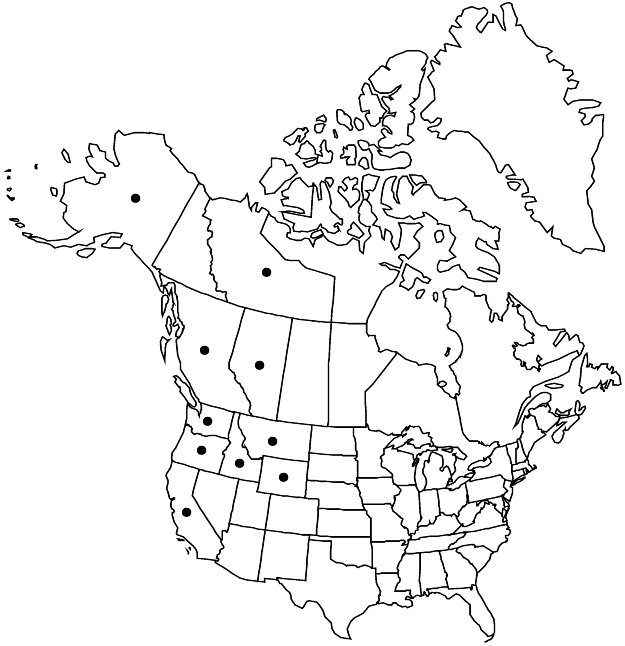Difference between revisions of "Micranthes ferruginea"
J. Bot. Res. Inst. Texas 1: 1020. 2007 ,.
FNA>Volume Importer |
FNA>Volume Importer |
(No difference)
| |
Revision as of 23:00, 16 December 2019
Plants solitary or tufted, with bulbils on caudices, short-rhizomatous. Leaves basal; petiole indistinct, flattened, to 2 cm; blade spatulate to oblanceolate, 1–8(–10) cm, ± fleshy, base cuneate, margins irregularly serrate (usually with fewer than 12 coarse teeth), ciliate, surfaces hairy. Inflorescences 20–30+-flowered, (flowers sometimes replaced ± completely by bulbils, or bulbils sometimes absent), open, lax thyrses, 10–40 cm, moderately to ± densely purple stipitate-glandular; (bracts reduced). Flowers ± bilaterally symmetric; sepals reflexed, ovate to oblong; petals white, 3 with 2 basal yellow spots, 2 without spots, elliptic to oblanceolate, clawed, 3–5 mm, longer than sepals; filaments linear, flattened; pistils connate 1/2+ their lengths; ovary superior, (to 1/3 adnate to hypanthium). Capsules green or yellow, sometimes purple tinged, or partly purple, valvate. 2n = 20.
Phenology: Flowering summer–early autumn.
Habitat: Wet ledges, seepage slopes, stream banks
Elevation: 10-2700 m
Distribution

Alta., B.C., N.W.T., Alaska, Calif., Idaho, Mont., Oreg., Wash., Wyo.
Discussion
Plants with bulbils replacing flowers are more common in the southern part (southern Alberta and British Columbia southwards) of the range of Micranthes ferruginea and have been called Saxifraga ferruginea var. macounii.
Selected References
None.